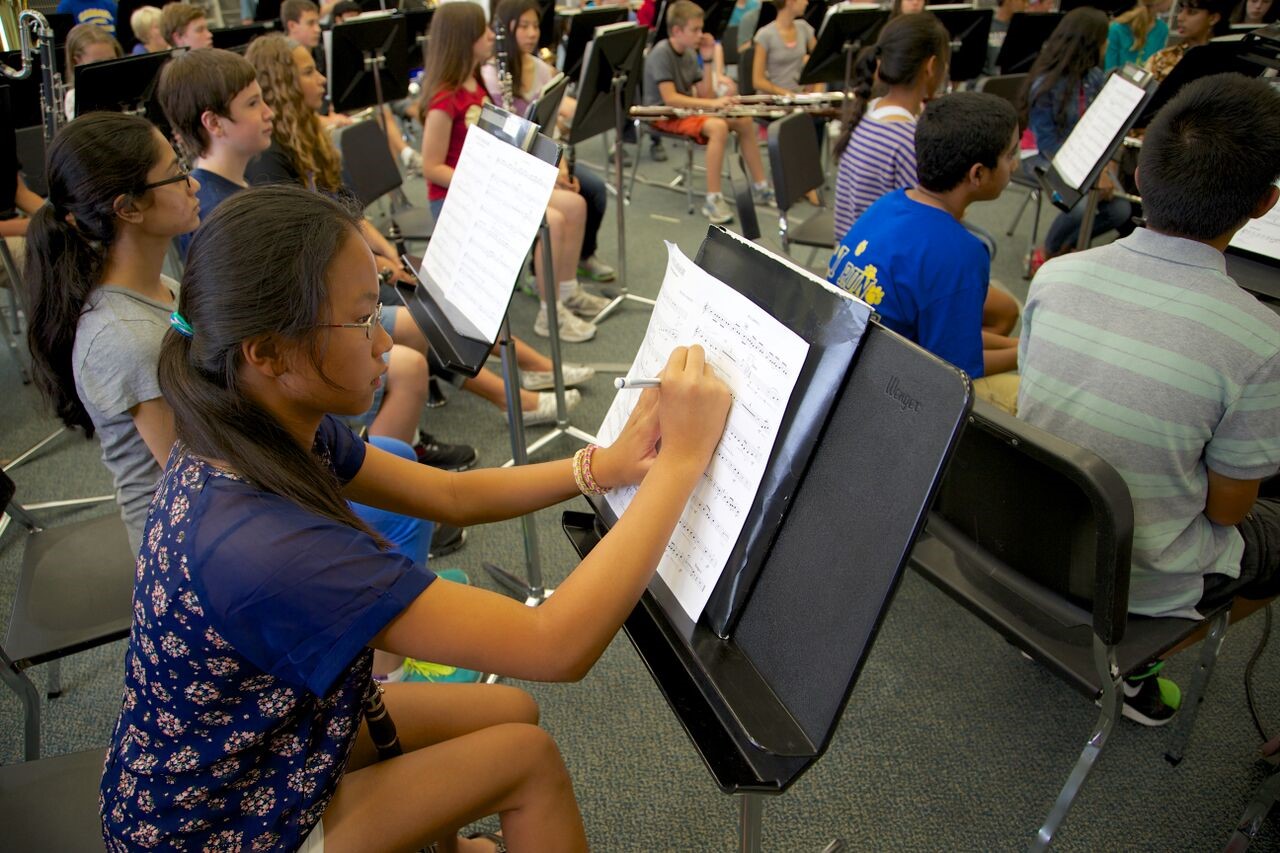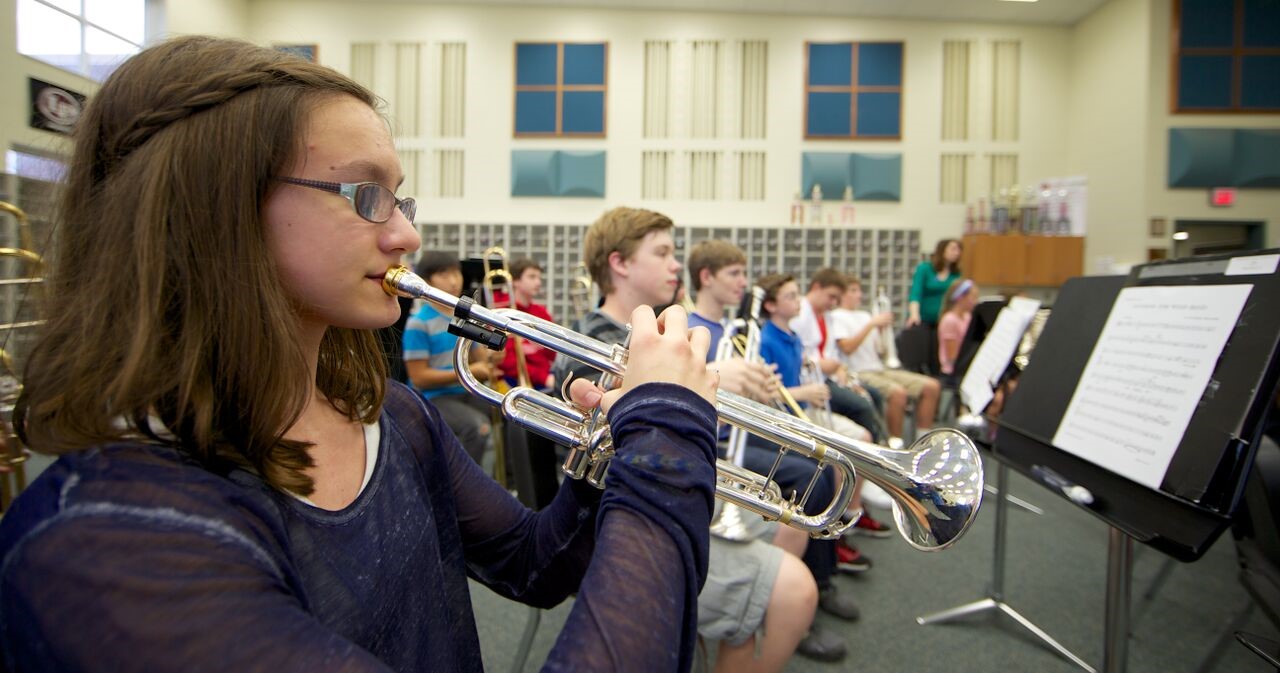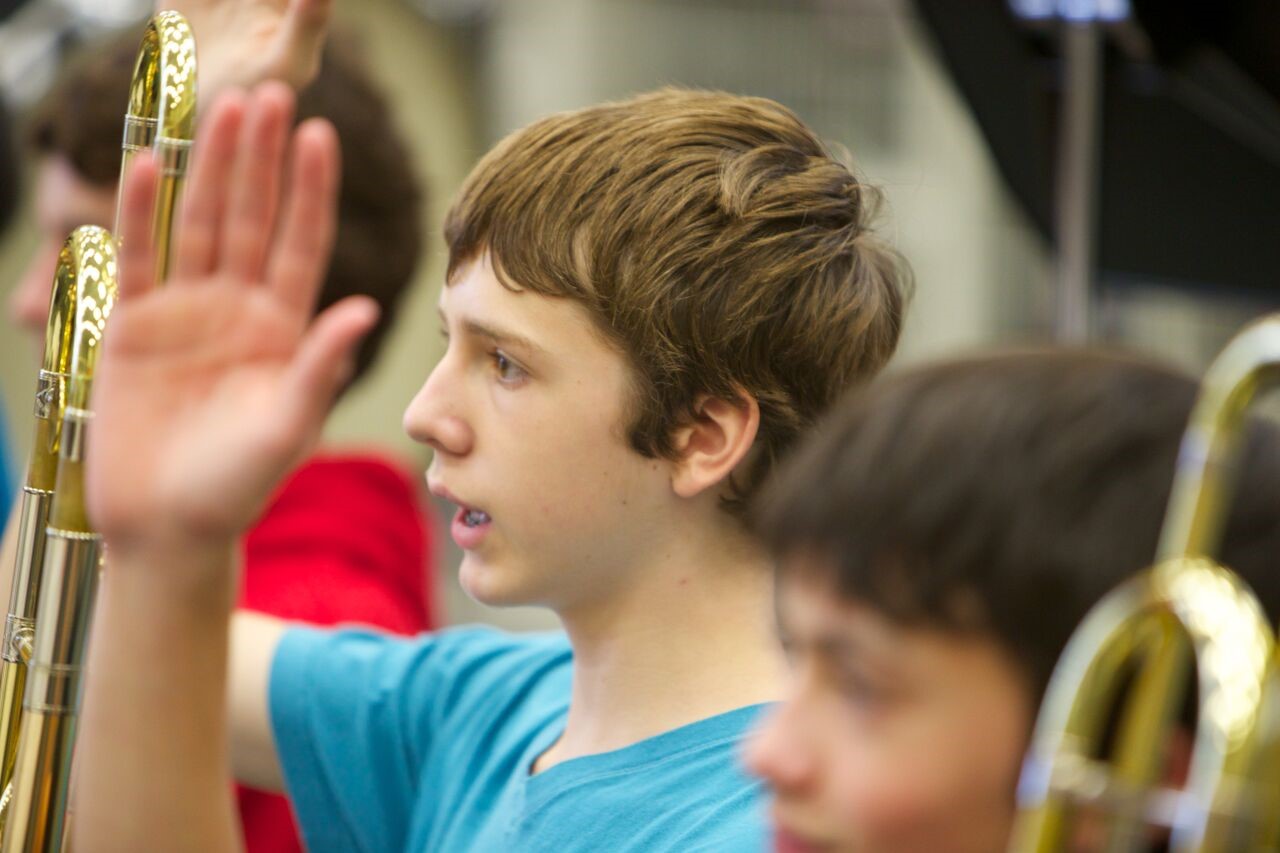Three Powerful Tips that will Take Your Band’s Performance to the Next Level
By NAfME Member Wendy Hart Higdon
Assessment season is upon us and directors all over the country will soon be stressing over the details in order to help their band sound as polished and perfect as possible. There are plenty of articles that share quick ideas for making your band sound better. However, if you really want to take your group to the next level, you need robust strategies that empower your students while raising their “musical IQ.” Read on for three ways to help your band sound its very best!

Photo Courtesy Doug Pileri
Focus on the Fundamentals
When the stress of preparing for a concert assessment performance hits, it’s very tempting to forego work on fundamentals in favor of hammering out notes and rhythms. A piece of advice: don’t give in to that temptation. The work you do on fundamental skills will pay off in the long run and help all the music you perform sound better. I recommend spending 20-30% of your rehearsal time practicing fundamentals such as the ones listed below:
- Posture, stand height and appearance: This seems like such an easy one, but it’s amazing how many directors forget about this tiny detail. I frequently talk to my students about how proper body position affects breathing, embouchure, ability to watch the conductor and so many other crucial aspects of performing. By simply raising the music stand to a height that allows the student to see the music and the conductor’s hands, many issues are immediately corrected. Take a few seconds at the start of each class, and as needed throughout the rehearsal, to have your students adjust their music stands and focus on proper body position. After all, it’s hard for a band that looks bad to sound good.

Photo Courtesy Doug Pileri
2. Breathing and Air Stream: Work with your students on taking in a relaxed, but full, breath each and every time. By relaxing on the inhale, students will play with less tension and more clarity in their sound. I recommend starting with a full two count breath, keeping the body free of tension while expanding in the middle to fill up with air. Once the students master a two count breath, you can begin to transfer the skill to a one count breath.
When applying breathing technique to sustained notes and literature, I tell students to breathe before they need to, even if that means leaving out a note or breathing in the middle of a phrase or during a sustained note. By doing this, students do not feel as rushed and will learn to take a relaxed breath. This technique also works well as you train your students to hold out phrase endings and stagger their breathing.
On the exhale, using a focused and directional air stream is necessary on all wind instruments in order to produce a characteristic sound that is well supported and in tune. While many people ask students to use “more air” or “faster air,” I have found that the words “focused and directional” get students to play with more clarity by creating a centered sound that is not overblown.
3. Entrances and Releases: Lack of precision on entrances and releases is a frequent problem in performances, so spend time working on this skill. While you will want to work on the timing of entrances and releases, it’s also important to practice consistency of articulations in your students’ playing. Most young musicians use too much tongue when they play, particularly when there is any type of style marking on a note. Often the tongue gets in the way of clarity in the sound. In my band room, we talk quite a bit about getting to the middle of the note as quickly as possible. Although there are different schools of thought in regards to performing articulations, I work with my students to tongue the same way every single time and create style by changing the ending of the note (i.e. staccato) or by using more air at the beginning of the note (i.e. accent).
4. Playing from note to note: It is important to make sure students can change notes in time and with precision, but directors should also spend time working with students so that the musical line has consistent tone quality from note to note. This can be particularly challenging when the interval between notes increases. When the leap is larger, notes tend to pop out either because the volume or the tone quality changes. Practicing Remington exercises or similar studies, while focusing on consistent sound and dynamic level can help your students with this area of concern.

Photo Courtesy Doug Pileri
I use the Essential Musicianship series books by Eddie Green and John Benzer to work on all of these fundamental skills with my groups. The book comes in three levels and is appropriate for beginners through advanced high school musicians.
Empower Your Students
Musicians who can analyze and react to what they hear while performing are essential to making your performance its very best. A typical program of three pieces will contain thousands of notes. A director simply cannot be the sole “problem solver” of the ensemble. Any issue that the students can fix themselves is one that you, as a director, don’t have to stop and correct. Even your first year musicians can learn this skill, so take time in rehearsal to ask higher level questions. If students can describe what they hear and suggest solutions to problems, you will find that they are capable of fixing a number of issues with minimal guidance from you.
For my youngest musicians, I might ask students to describe any issues they hear on a unison whole note. Students can quickly identify entrances or releases that are not together, tone quality that is forced or sounds that lack steadiness. This can lead to some wonderful follow up discussion on why the problems occurred and how to correct the issues. If you start simply with your beginners, by the second year and beyond, students can analyze and troubleshoot problems with timing, pitch, balance, blend and more. If your students are new at this sort of thing, record your group performing a short passage and then have them analyze what they hear.

Photo Courtesy Doug Pileri
Be Smart in Selecting Your Literature
Many directors err on the side of selecting music that is too difficult for their groups. While you want your music to provide new learning opportunities for your students, the challenges in your repertoire must be reasonable. The 80/20 rule is a good place to start. No more than 20% of your music should push the boundaries of your students’ technical and musical skill level. The other 80% should be reasonably accessible and allow for focus on the fine details. This gives you the opportunity to grow your students’ skills while still giving them room to dig into the details of the music.
In addition, you want a varied program in terms of style and genre that will show off a wide range of skills, while making sure to follow the programming requirements of your state’s assessment. Selecting quality literature that is appropriate for your ensemble is key.
Coda
By focusing on fundamental skills that translate into better performance, empowering your students by getting them to think critically, and selecting quality literature that provides just the right amount of challenge, you can put your ensemble on a path to a successful performance. Best wishes to you and your students!
About the author:

NAfME Member Wendy Higdon is the Director of Bands and Unified Arts Department Chair at Creekside Middle School in Carmel, IN. She began her career as Director of Bands at Lebanon Middle School (IN) in 1991 and came to Carmel Clay Schools in 1999 where she taught band at Carmel Middle School until the opening of Creekside in 2004. Under her leadership, the performing arts programs at Creekside have grown from 400 students in 2004 to nearly 900 students this year.
